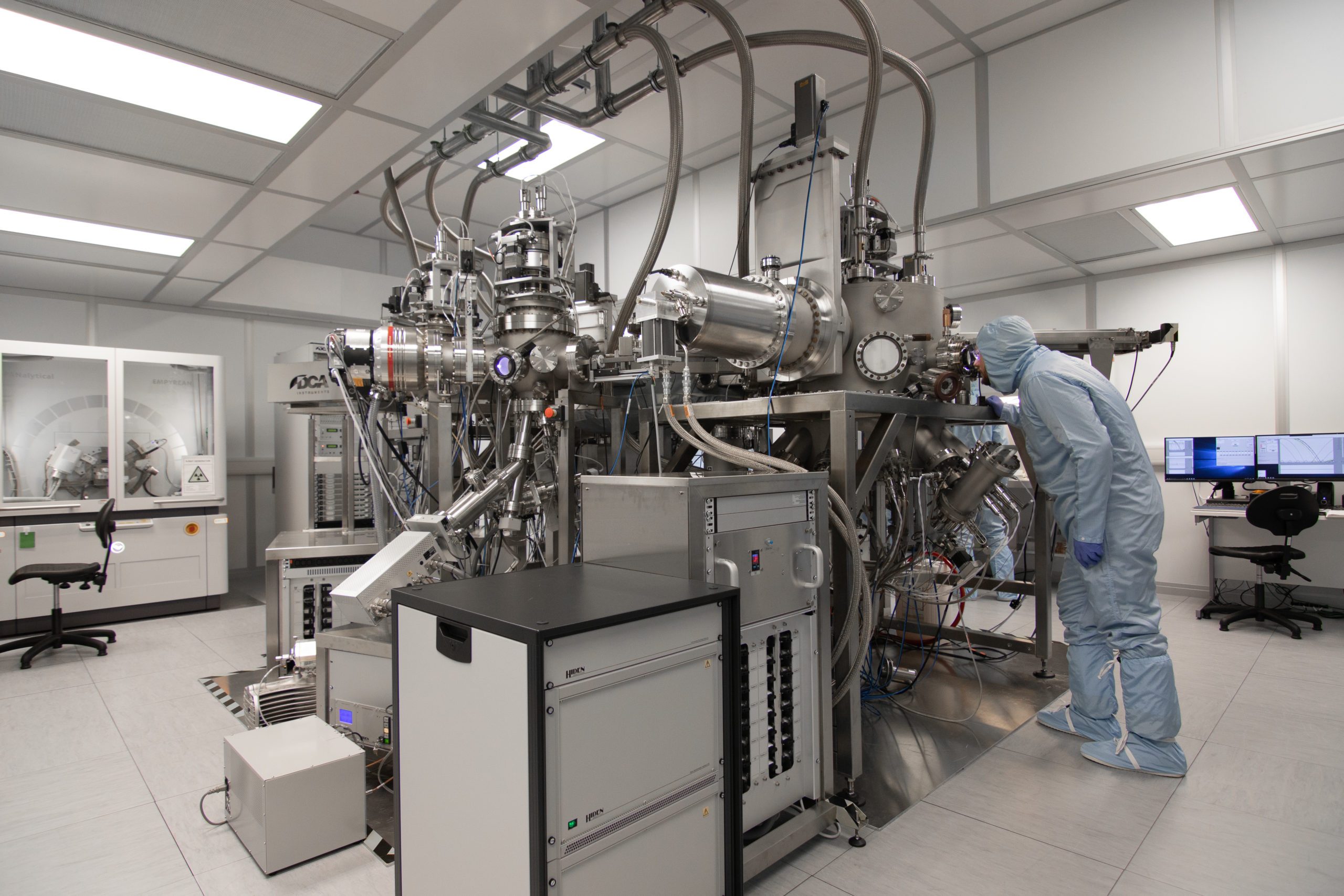
Bringing quantum research into manufacturing of the future
Professor Jon Heffernan is the Deputy Director of the Future Photonics Hub and leads the National Epitaxy Facility, based at the University of Sheffield, which is pioneering the development and commercialisation of world leading quantum science and technology based on semiconductor quantum dots.
What are Semiconductor Quantum Dots?
Quantum dots are sometimes called artificial atoms and are comprised of nanometer-sized materials that behave in a similar fashion to isolated atoms. A dot looks like a droplet and possess many varied electronic and optical properties, depending on its material composition and shape. Collections of millions of quantum dots have already been commercialised and used in lasers and LEDs, but the most common application society is used to is QLED TVs.
How can you use Semiconductor Quantum Dots?
Unlike a real atom, we can control the properties of a quantum dot by changing its composition or its size through various techniques.
QLED TVs are using quantum dot technologyto make the red, green and blue pixels that make up the colour of your TV screen and they do this by controlling the size and the composition of the dot.
More advanced quantum dot technology, which we are exploring through the Hub, is looking at the use of the more esoteric quantum properties of the dots. The Hub’s focus is photonics – light and the optical properties of materials.
We can use these single dots to create single photons and photon pairs, which have amazing and counterintuitive quantum properties, which we still don’t fully understand. They can however, already be used in applications in three main areas – quantum computing, quantum cryptography and quantum sensing.
What real world applications are there with Semiconductor Quantum Dots?
Photonics plays a huge role in society today – from the lasers that are the heart of the internet, to transport networks and our medical equipment. Semiconductor Quantum Dots are a particularly important source of single photons of light, which can be used in many important quantum science experiments but are also of great commercial significance as the building blocks for quantum computers and ultra-secure quantum communication systems.
Standard security measures on communications over the internet, like zoom calls, use cryptography based on mathematical methods. We are interested in using the quantum properties of photonics to make ‘ultimate-security’ networks based on the laws of physics and the strange properties of quantum mechanics. Under the right conditions, we can create pairs of single photons that can be ‘entangled’.
By this we mean they are inextricably linked, such that a measurement on one of the photons in the pair determines the property of the other photon even over vast distances. If one of those photos was intercepted, it can be detected and this is the basis of secure communications by the ability to detect any eavesdropper through the properties of these entangled photons. This is a very strange property, first considered by Einstein, and something that’s been researched for more than 70 years. Fundamentally, we still don’t know why this happens, but we can use it to create ultra-secure communications. Mathematical cryptography can be hacked with a big enough computer, but because quantum cryptography uses the fundamental physical properties of the photons, it’s ultra-secure.
The other exciting area of application is using single photons in sensing, which will allow us to see incredibly small amounts of light and could use entanglement to essentially look around corners.
What is being done to bring quantum research into manufacturing?
A Semiconductor Quantum Dot is a perfectly ordered atomic structure; it is in fact a single crystal. But making one is very challenging. We do this through a process called epitaxy, which is effectively a crystal growth technique. We grow these crystals one atomic layer at a time. At the National Epitaxy Facility in Sheffield, we have the advanced equipment and tools to achieve this level of precision. In addition, to create devices from quantum dots, we need very high purity material which is again the specialism of the National Epitaxy Facility.
But there are two main challenges in manufacturing the quantum properties of quantum dots. Creating single or pairs of photons that can be entangled is not easily achieved – they are very disturbed by defects in the materials. Small defects or impurities in the dot change the nature of the photons and we lose those crucial quantum properties that we require to make a quantum technology. This is a major challenge for researchers and industry.
Additionally, we need many dots to make a true quantum technology and they all need to be identical, which presents another major challenge. We can study the science of dots and we can demonstrate quantum properties but to scale this up is a real challenge and we are exploring a variety of manufacturing techniques to enable this. This is a key focus of the Photonics Hub.
How can the Hub support this research and its applications?
The Hub is helping us explore a range of options to meet the challenges of scale up – making hundreds of quantum dots and the means of connecting them together. Some of these projects are at the basic research level and as we make progress they reach a point where we need to think about the technological applications. The Hub, with its wide range of expertise and experience, is helping us bring other technologies to bear on the problem.
What does the future hold for this area of research?
There is a big quantum technologies program within the UK and we are linking with industry and the Hub to advance the UK’s position in this very important field. There’s a broad spectrum of activity from the basic science right through to the scale-up and ultimately the commercialisation. Everyone, including the Hub, is working within an ecosystem that will ultimately end in a quantum computer, a quantum communications device or a quantum sensor with profound and positive impacts on society.